Chapter 7 Axial Skeleton
1/36
There's no tags or description
Looks like no tags are added yet.
Name | Mastery | Learn | Test | Matching | Spaced |
|---|
No study sessions yet.
37 Terms
List the functions of the Axial Skeleton.
• Contains 80 bones
• The axial skeleton serves as a framework that supports and protects organs, provides and extensive surface area for muscle attachment, and it also stabilizes and positions parts of the appendicular skeleton that support the limbs.
• The axial skeleton includes the skull (8 cranial bones and 14 facial bones), the bones associated with the skull (6 auditory (1)ossicles and the (1)hyoid bone), the vertebral column (24 vertebrae, the (1)sacrum, and the (1)coccyx), and the thoracic cage (the sternum and 24 ribs).
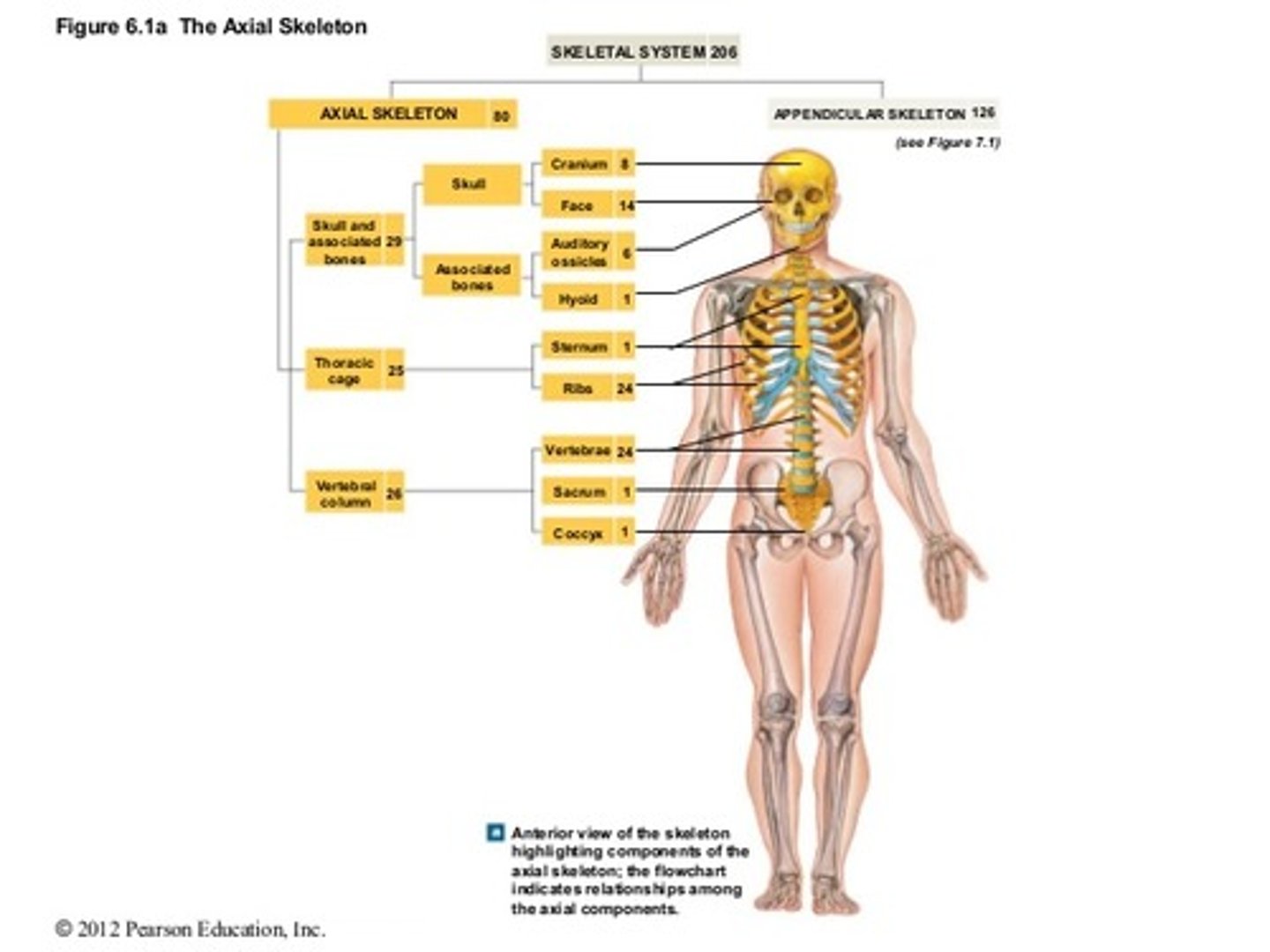
What are the four major sutures?
1. Lambdoid suture- this suture connects the occipital bone with the two parietal bones.
2. Coronal suture- attaches the frontal bone to the parietal bones of either side.
3. Sagittal suture- extends from the lambdoid suture to the coronal suture, between the parietal bones.
4. Squamous suture- on each side of the skull joins the temporal bone and the parietal bone of that side.
Frontal bone
general functions- forms the anterior portion of the cranium and the roof of the orbits. Mucus from the frontal sinus within this bone helps flush the surfaces of the nasal cavity.
articulations- parietal, sphenoid ethmoid, nasal, lacrimal, maxillary, and zygomatic
Contains the coronal suture, frontal sinus, & supraorbital foramen- provides a passage for blood vessels that supply the eyebrow, eyelids, and frontal sinus.
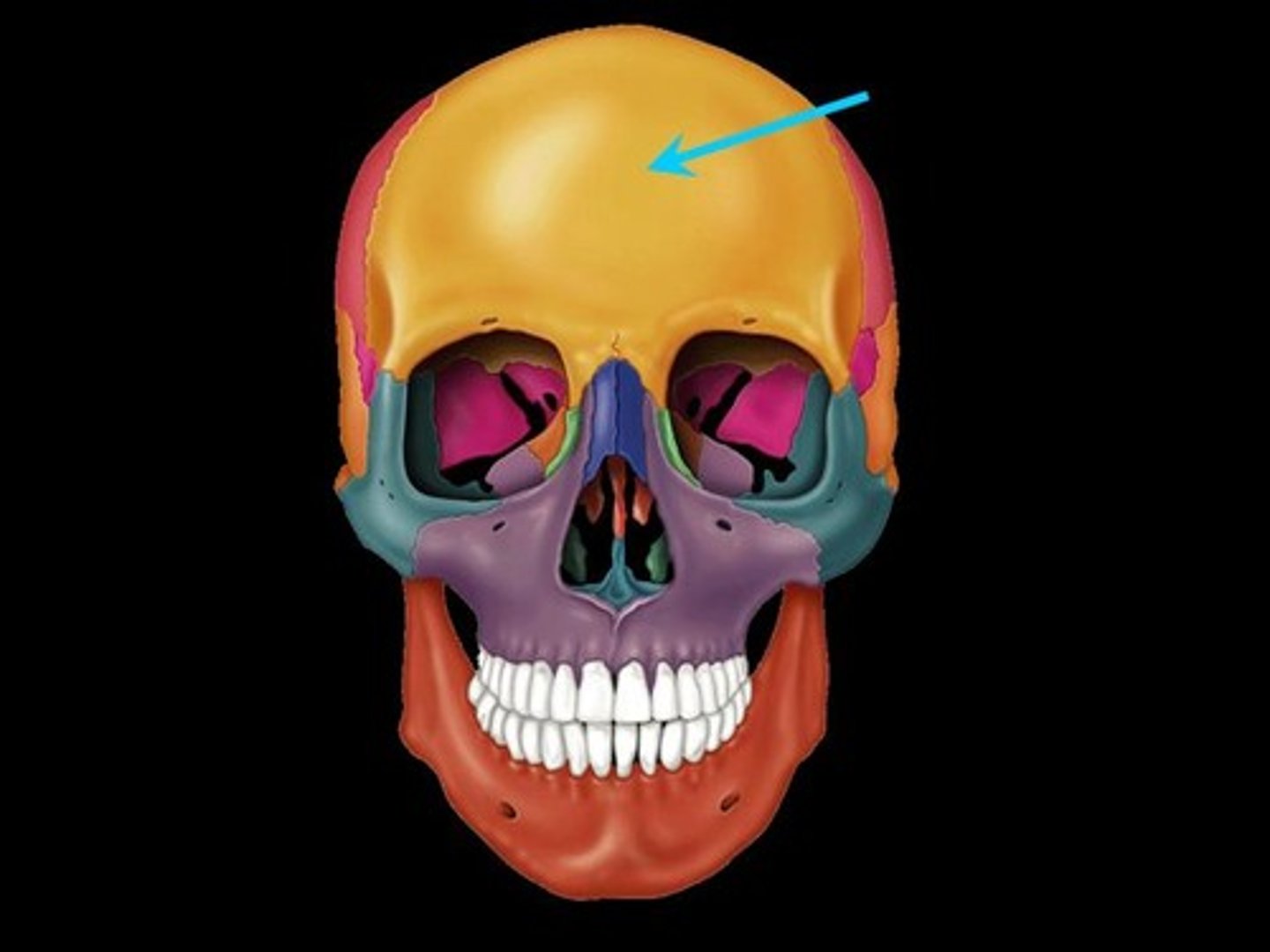
Parietal bones
general function- form part of the superior and lateral surfaces of the cranium.
articulations- with one another, occipital, temporal, frontal, and sphenoid
Contains the sagittal suture and squamous suture.
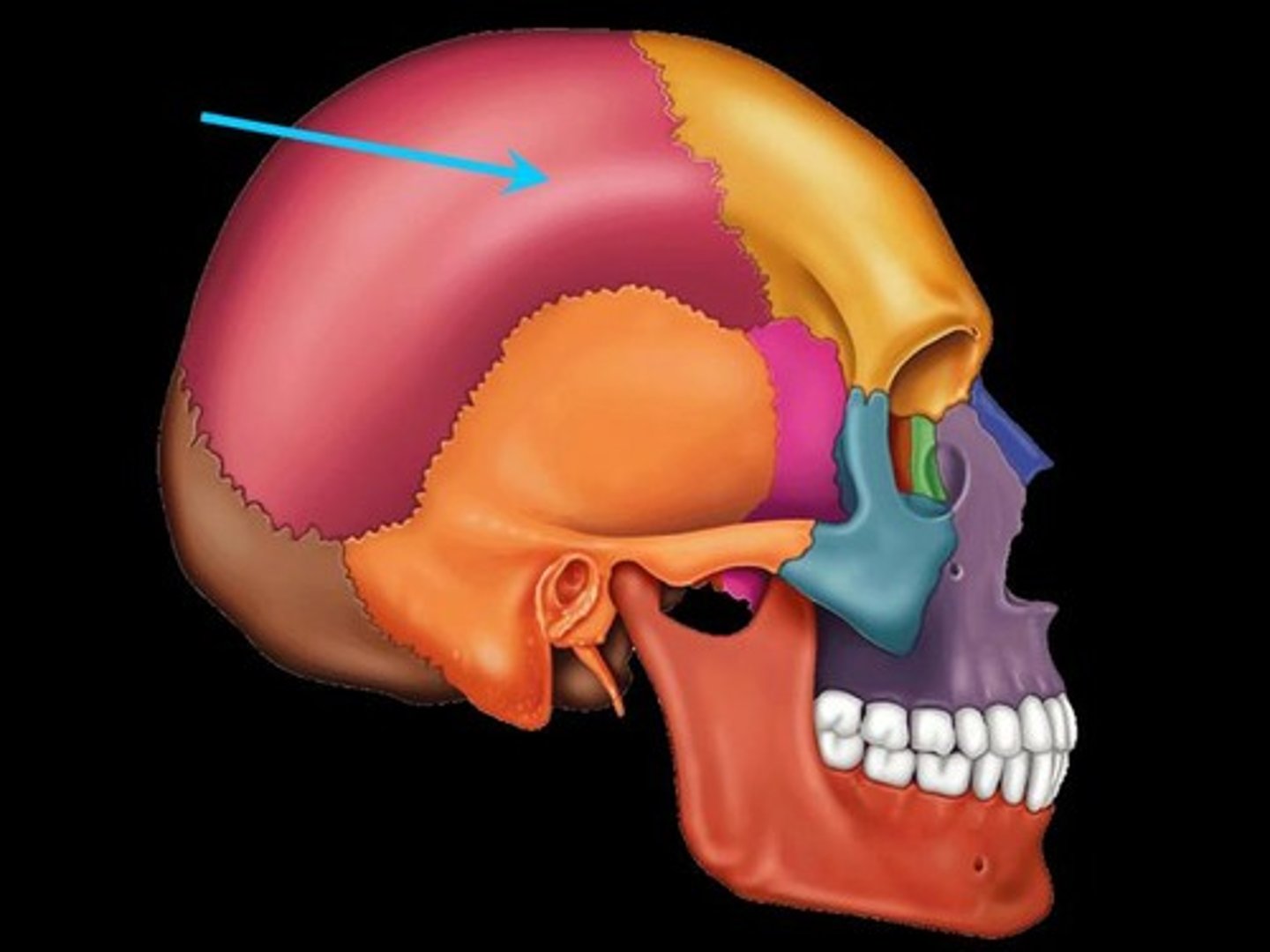
Occipital bone
general function- forms much of the posterior and inferior surfaces of the cranium.
articulations- parietal, the temporal bones, sphenoid, and the first cervical vertebra (atlas).
Contains- occipital condyle, foramen magnum, & lamboidal suture
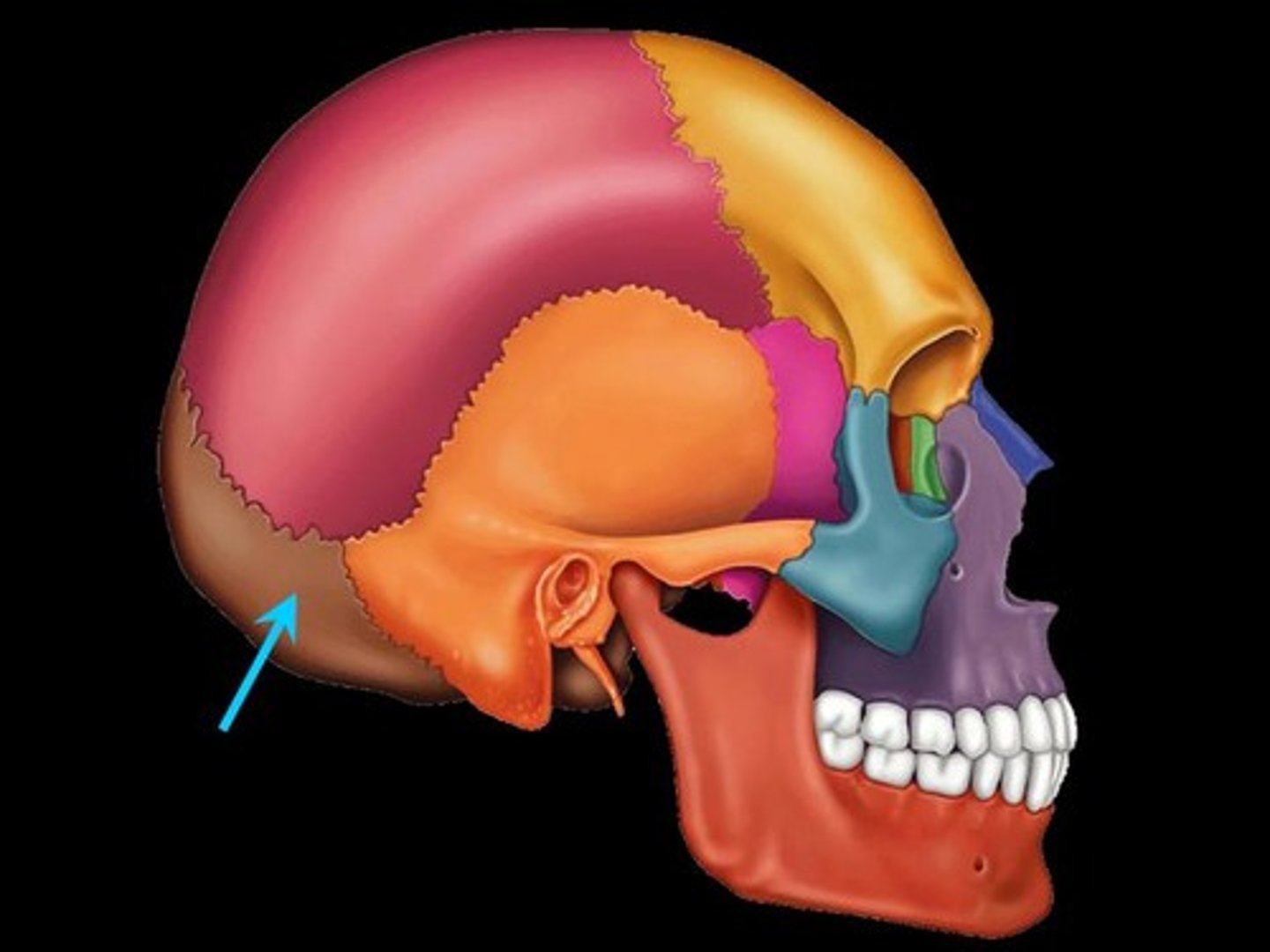
Temporal bones
general function- 1. form part of both the lateral walls of the cranium and the zygomatic arches
2. form the only articulations with the mandible
3. surround and protect the sense organs of the internal ear
4. are attachment sites for muscles that close the jaws and move the head
articulations- zygomatic, sphenoid, parietal, and occipital bones of the cranium, and with the mandible
Contains- mastoid process, zygomatic process, styloid process, esternal auditory meatus, jugular foramen, & carotid canal
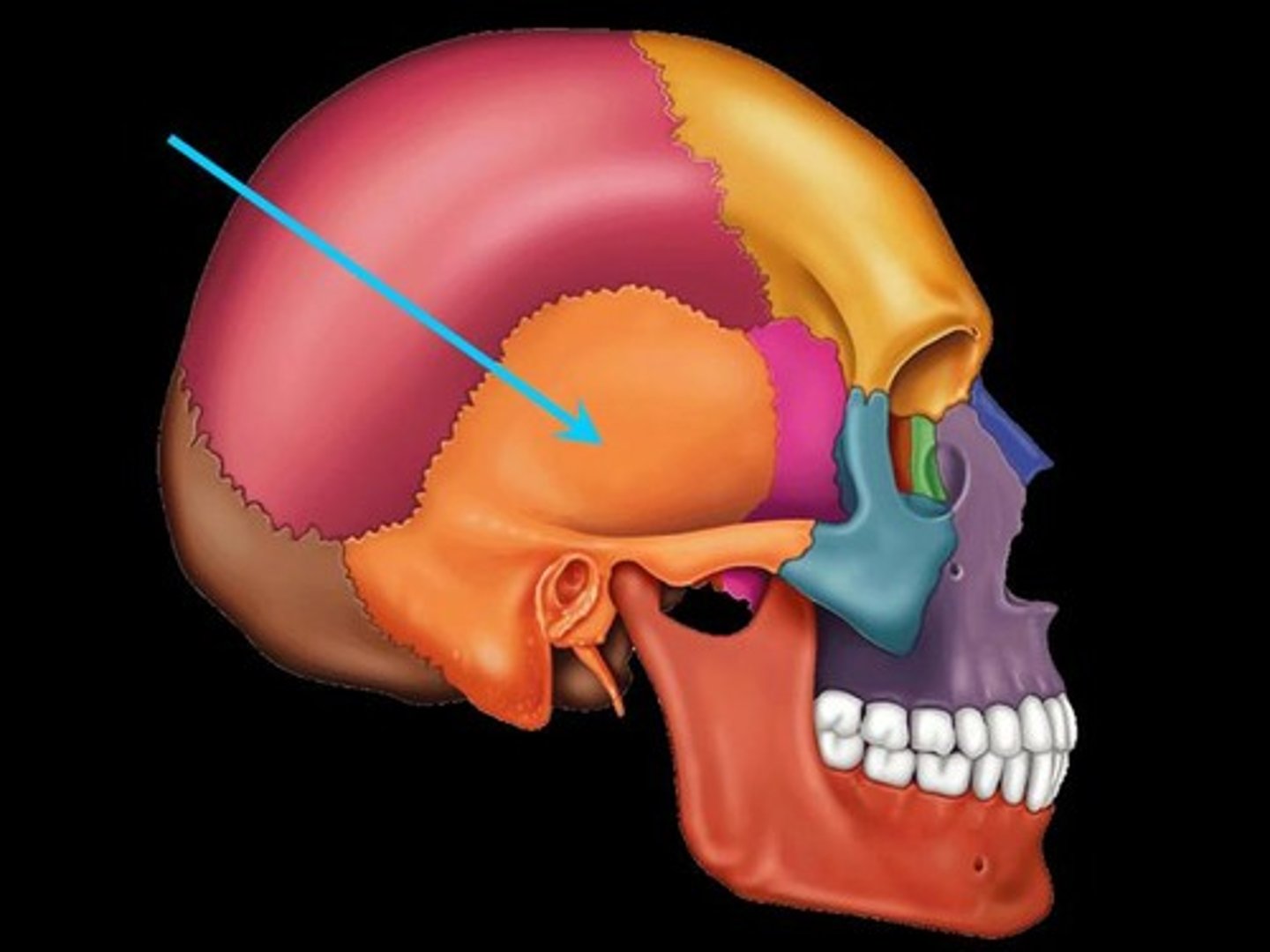
Sphenoid bone
general function- forms part of the floor of the cranium, unites the cranium and facial bones. Acts as a coss-brace that strengthens the sides of the skull. Helps clean the surface of the nasal cavity.
articulations- ethmoid, frontal, occipital, parietal, and the temporal bones of the cranium and the palatine bones, zygomatic bones, maxillae, and vomer of the face
contains- sella turcica, hypophyseal fossa, greater wing, sphenoidal sinus
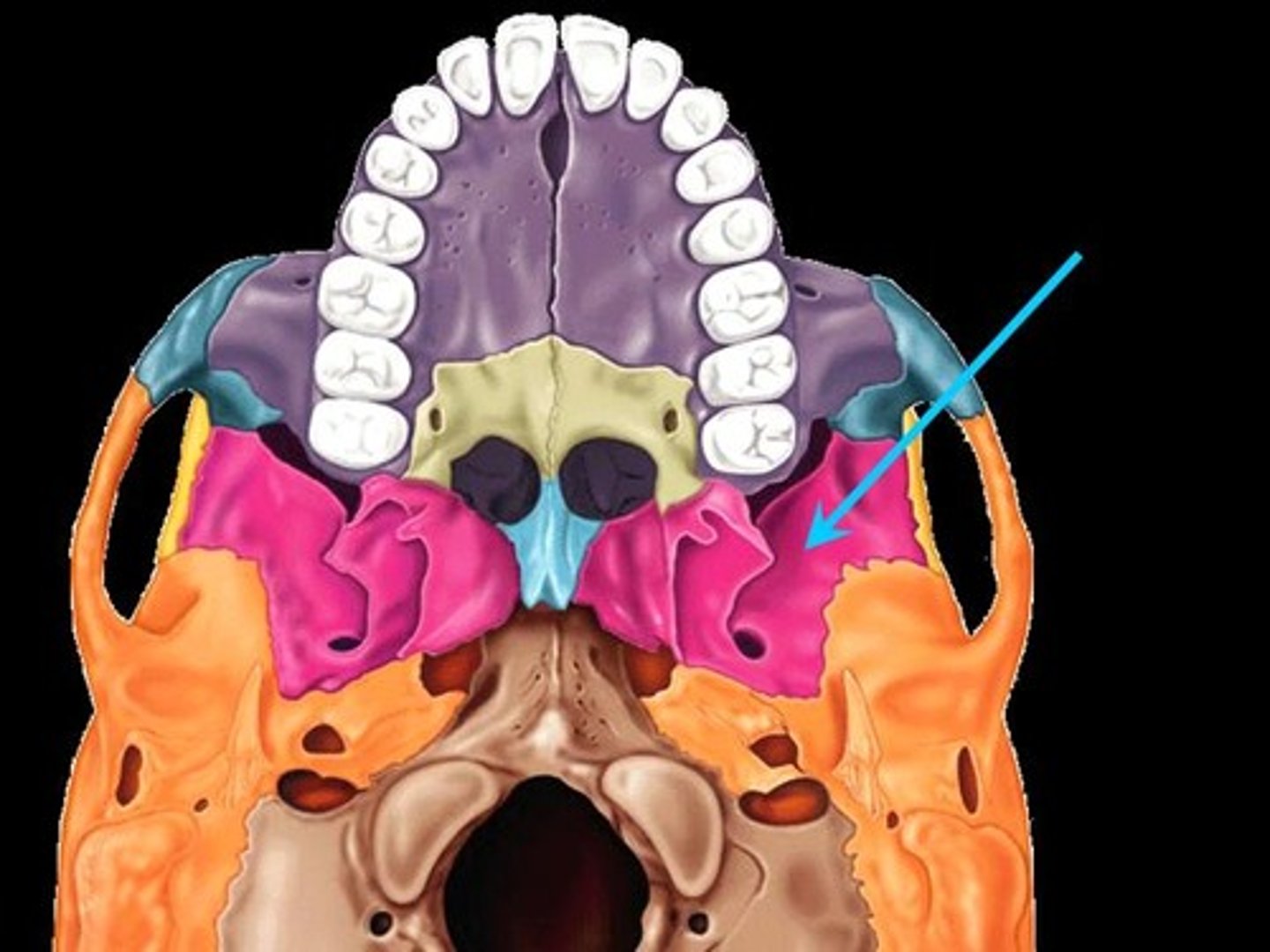
Ethmoid bone
general function- forms the anteromedial floor of the cranium, the roof of the nasal cavity, and part of the nasal septum, and the medial orbital wall. Mucus from a network of sinuses within this bone flushes the surfaces of the nasal cavities.
articulations- fontal, sphenoid of the cranium and with the nasal, lacrimal, palatine, and maxillary bones and the inferior nasal conchae and vomer of the face.
contains- crista galli, cribiform plate, perpendicular plate, ethmoid sinuses
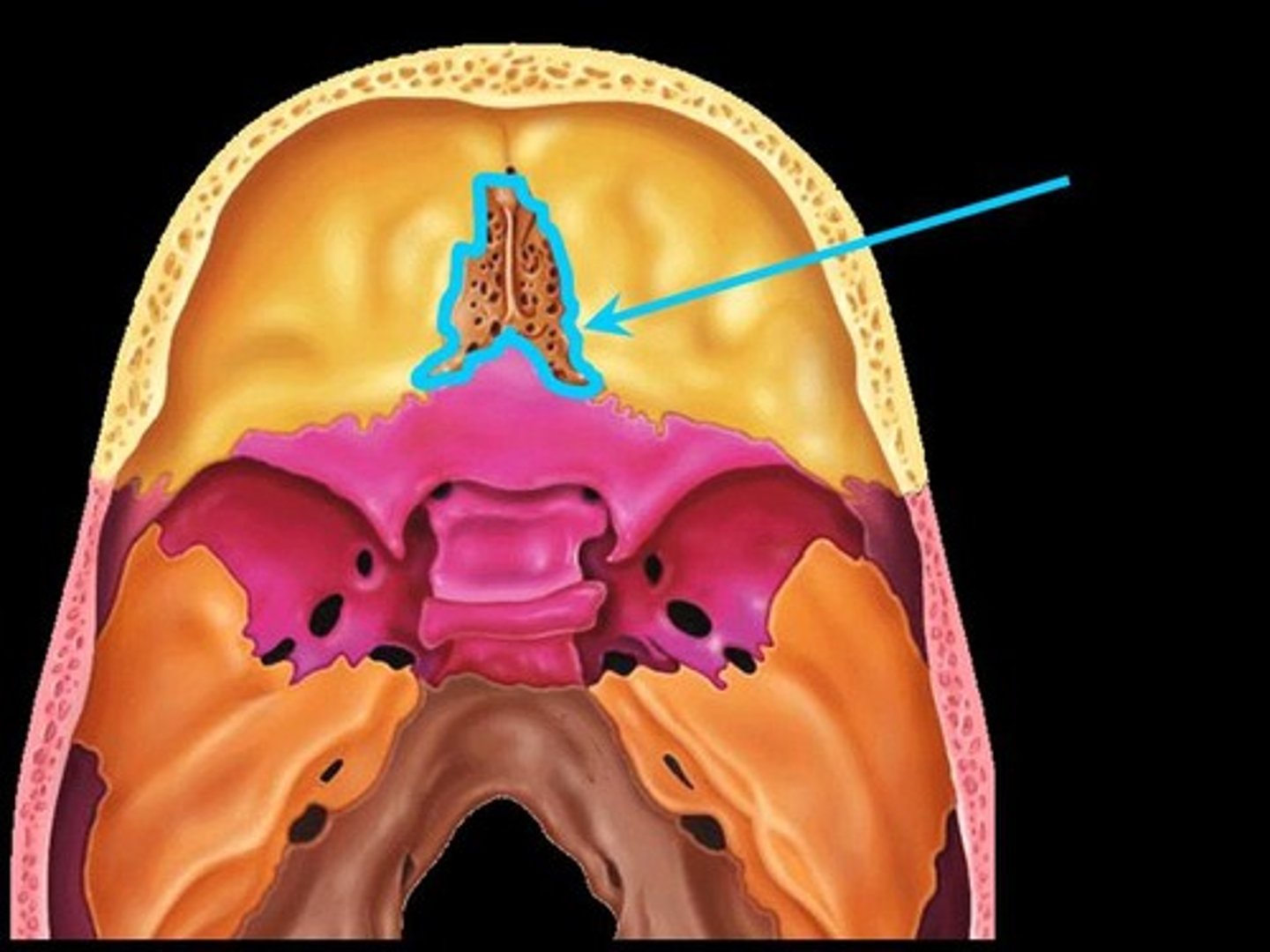
Zygomatic bones
general function- contribute to the rim and lateral wall of the orbit and form part of the zygomatic arch.
articulations- maxillae, and the sphenoid, frontal, and the temporal bones
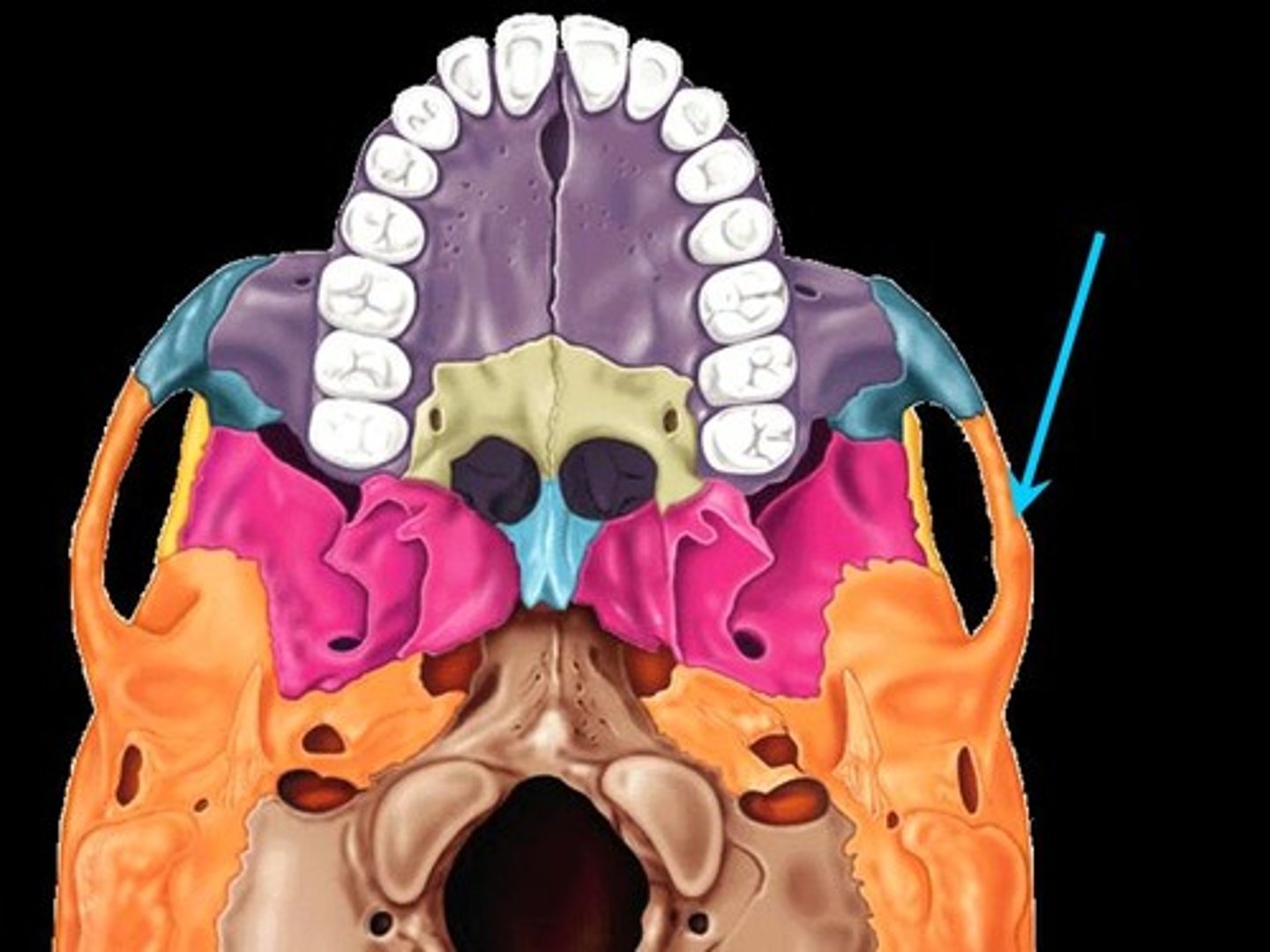
Maxillae Bone
general function- support the upper teeth and form the inferior orbital rim, the lateral margins of the external nares, the upper jaw, and the most of hard palate. The maxilla are the largest facial bones and the maxillary sinuses are the largest sinuses.
articulations- frontal, ethmoid, with one another, and with all the other facial bones except the mandible.
contains- palatine process & maxillary sinuses
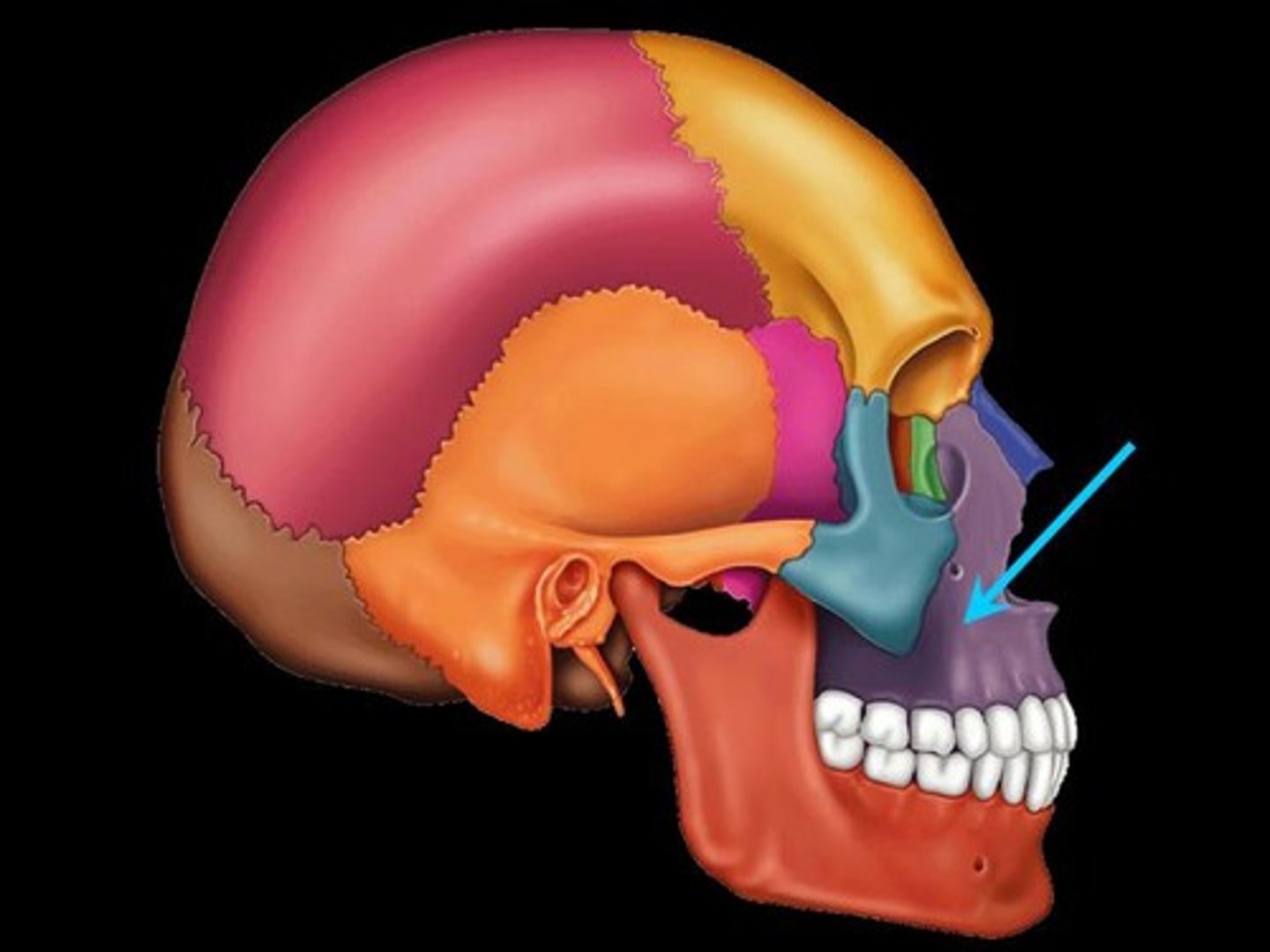
Mandible Bone
general function- forms the lower jaw
articulations mandibular fossae of the temporal bones.
contains- mandibular condyle, body, coronoid process, ramus, & angle
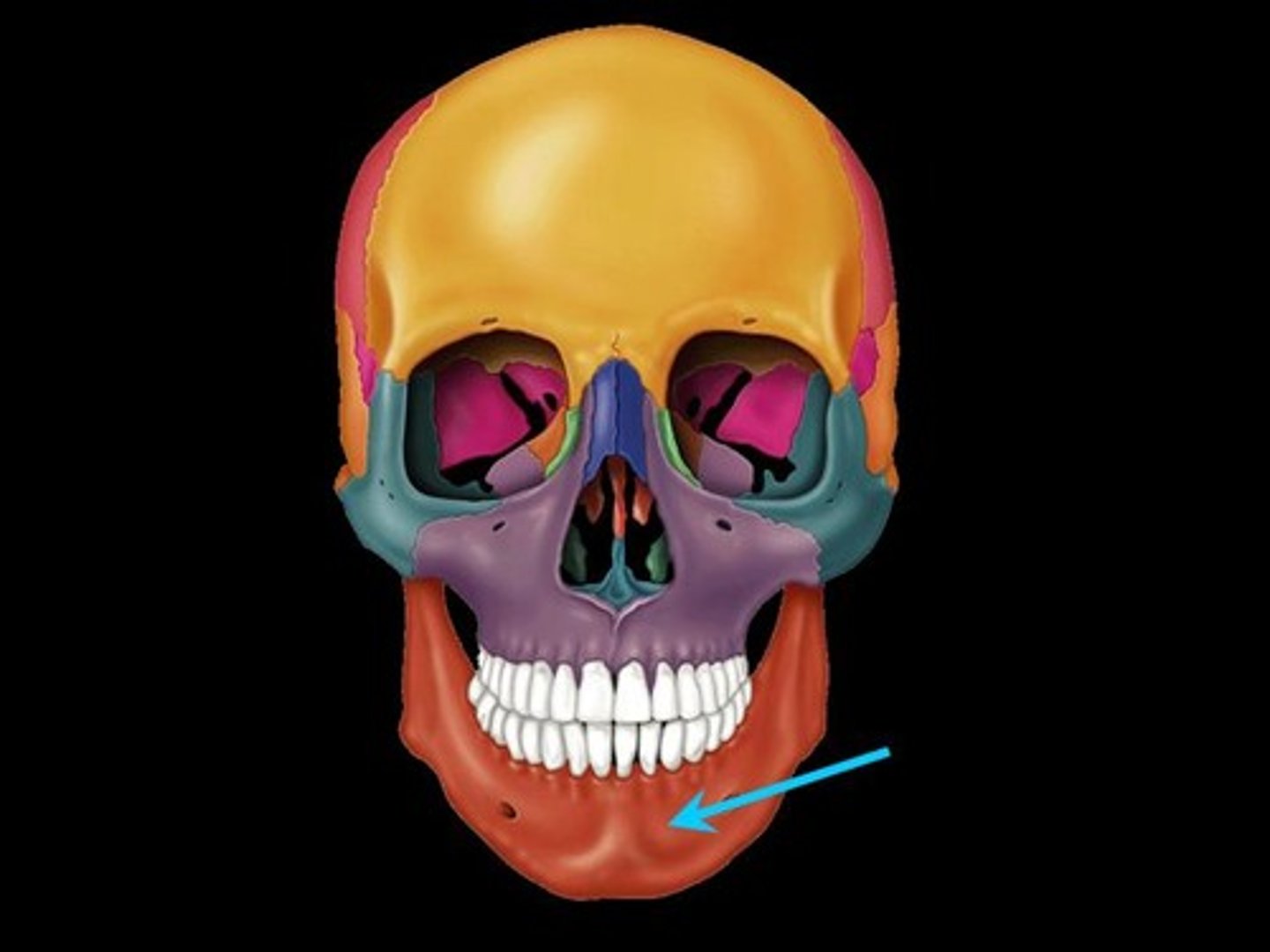
Lacrimal Bones
general function- form part of the medial wall of the orbit
articulations frontal, maxillae, and with the ethmoid
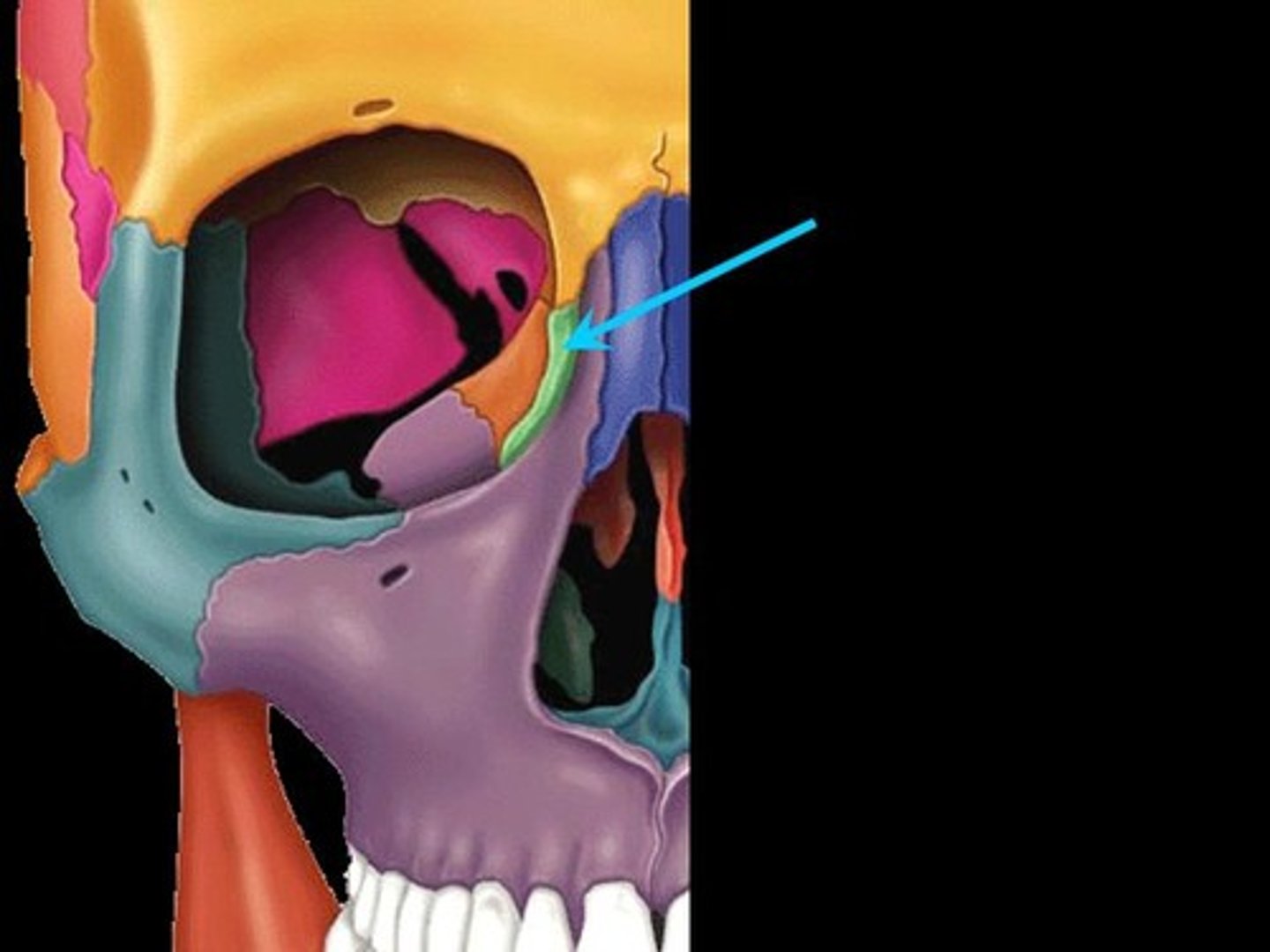
Nasal bones
general function- support the superior portion of the bridge of the nose.
articulations-with one another, ethmoid, frontal, and maxillae
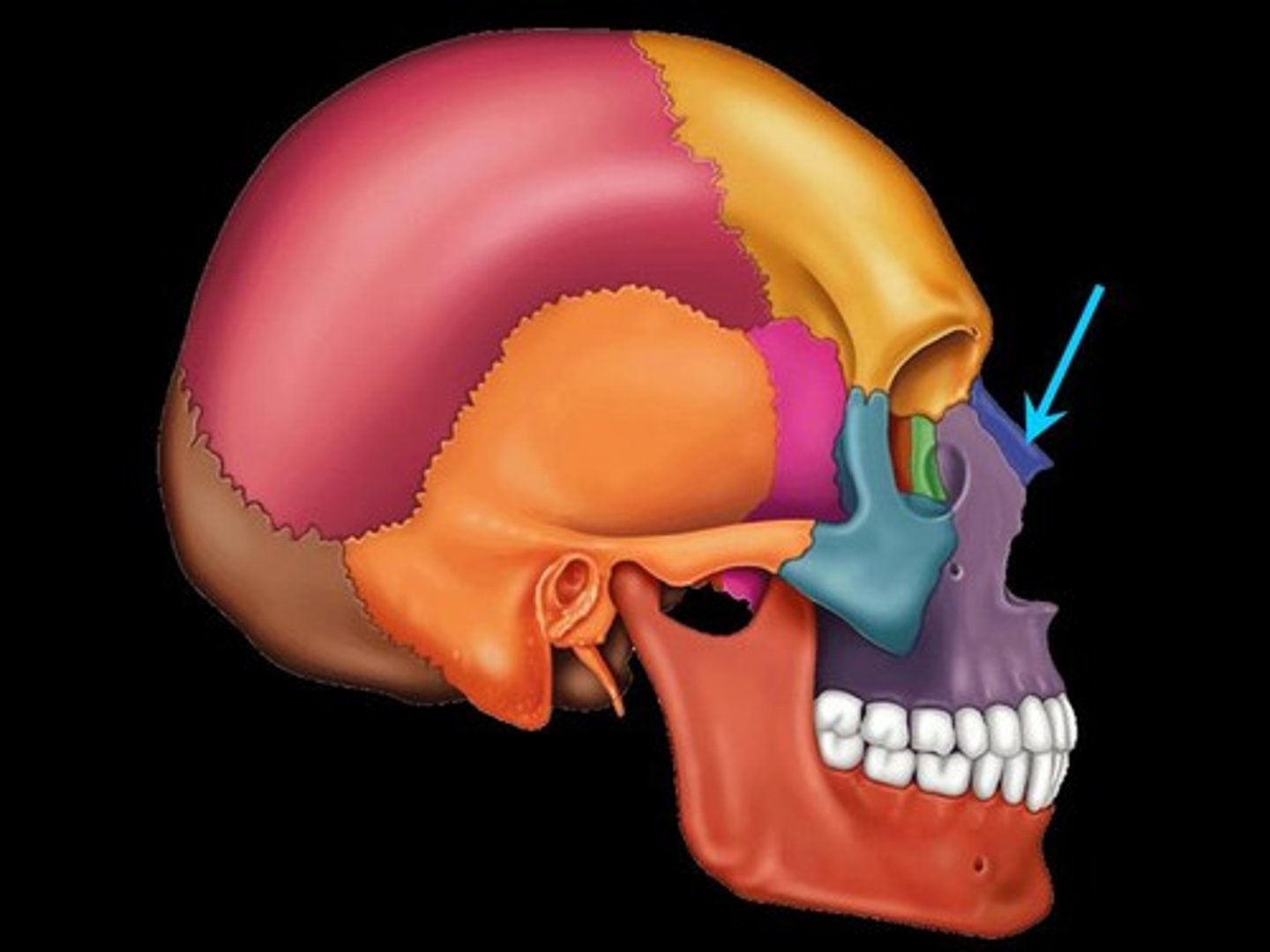
Palatine bones
general function- form the posterior of the hard plate. They also contribute to the floor of each orbit
articulations- with one another, with the maxillae, with the sphenoid and ethmoid, with the inferior conchae, and with the vomer.
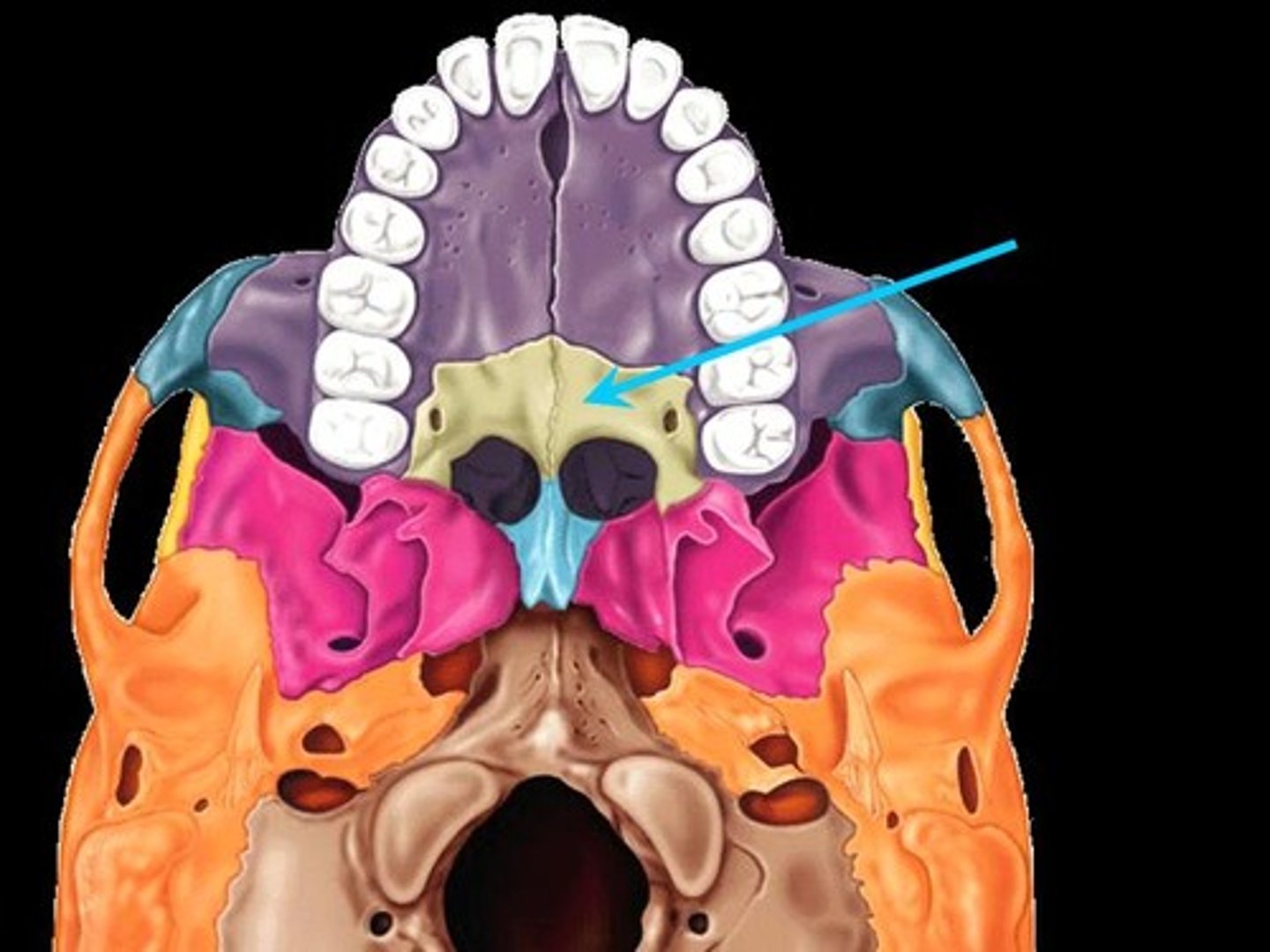
Vomer bone
general function- forms the inferior portion of the bony nasal septum
articulations- with the maxillae, sphenoid, ethmoid, and palatine bones, and with the cartilaginous part of the nasal septum, which extends into the fleshy part of the nose.
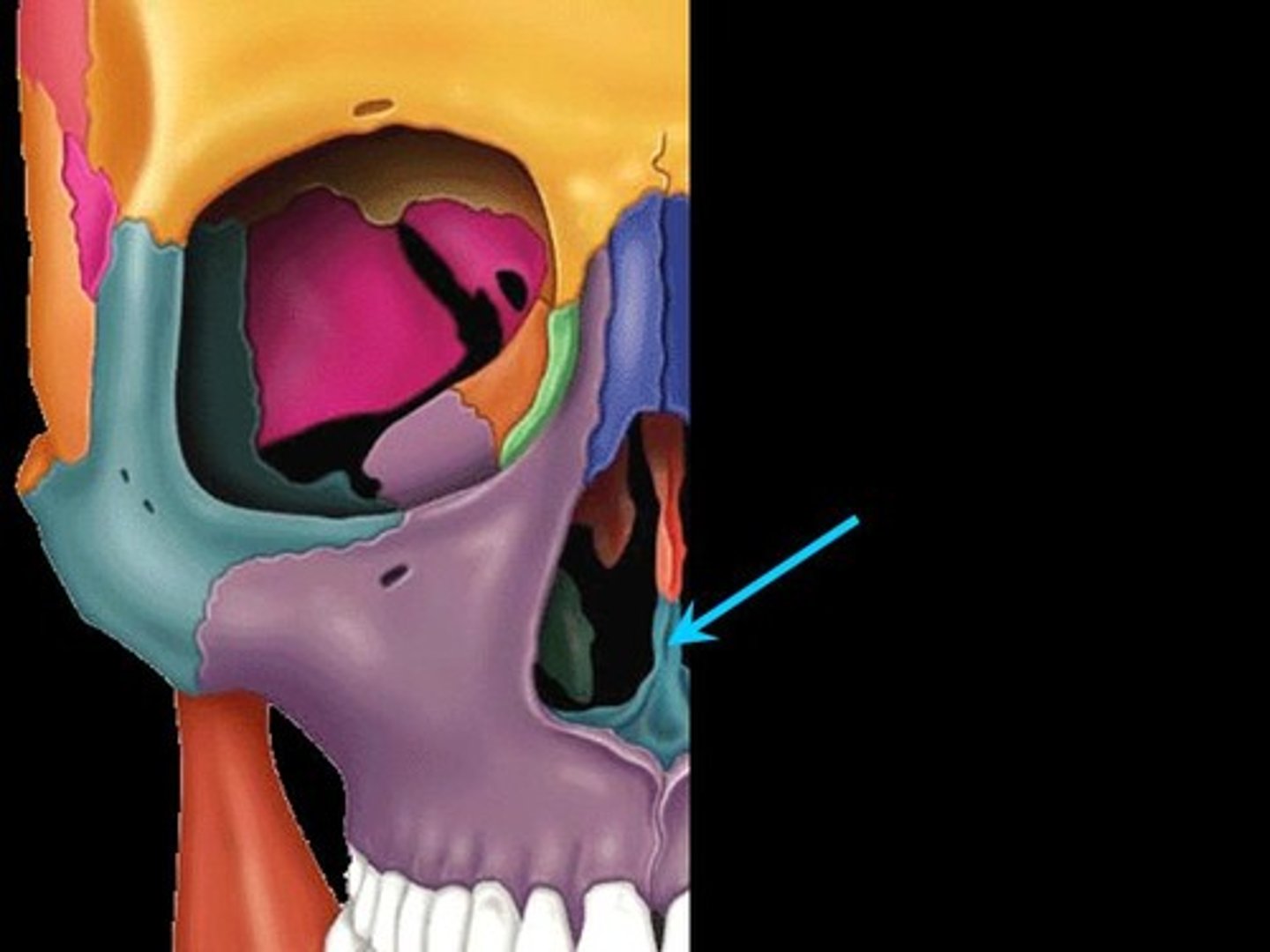
Inferior nasal concha
general function- creates turbulence in air passing through the nasal cavity. They also increase the epithelial surface area to promote warming and humidification of inhaled air.
articulations- with the maxillae, ethmoid, palatine, and lacrimal bones.
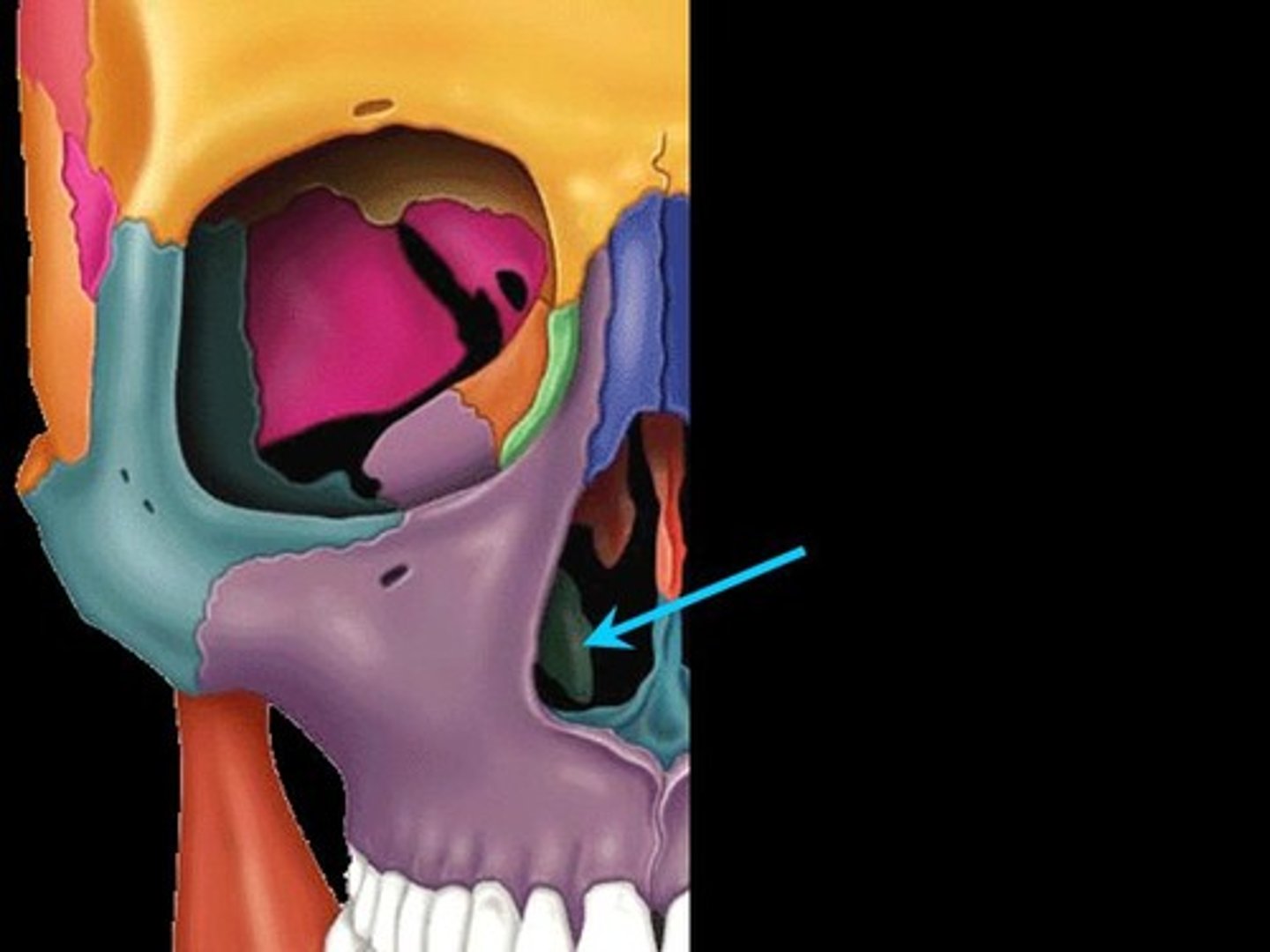
Identify the structures of the eye orbit, nasal complex, and paranasal sinuses.
• Eye Orbit (Orbital Complex)-The bones forming the orbital complex are the frontal, sphenoid, zygomatic, palatine, maxilla, lacrimal, and ethmoid.
• Nasal Complex- The bones forming the nasal complex are the frontal, ethmoid, nasal, maxilla, palatine, and sphenoid.
• Paranasal Sinuses- The sphenoid, ethmoid, frontal, and paired palatine and maxillary bones contain the paranasal sinuses.
Explain how the bones of the vertebral column are named.
• The adult vertebrae column, or spine, consists of 26 bones: the vertebrae (24), the sacrum (1), and the coccyx, or tailbone. The vertebra provides a column of support.
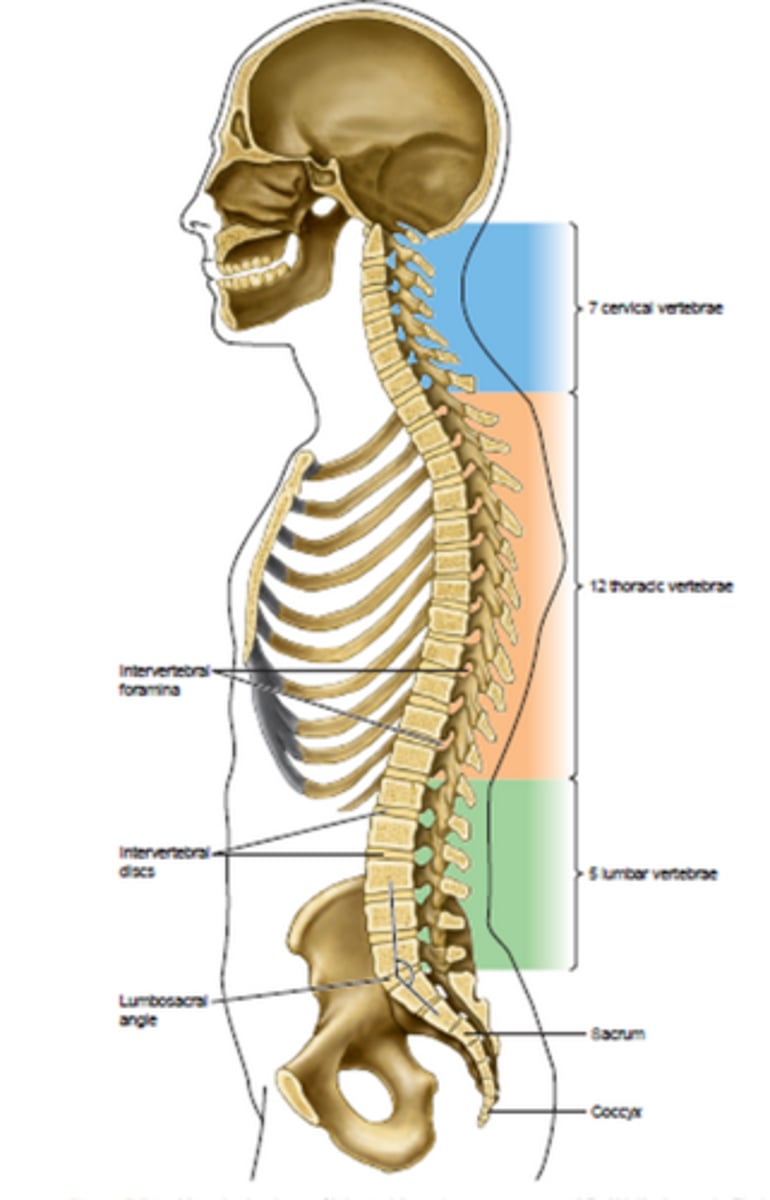
Identify the two primary and two secondary curves of the spine.
• Primary curves - appear late in fetal development. They are also called accommodation curves, because they accommodate the thoracic and sacral curves.
o Thoracic curve- a primary curve, accommodates the thoracic organs. (12vertebrae)
o Sacral Curve- a primary curve, accommodates the abdominopelvic organs.
• Secondary curves- appear several months after birth. They are also known as compensation curves because they shift the weight to permit an upright posture.
o Lumbar Curve- a secondary curve, balances the weight of the trunk over the limbs; it develops with the ability to stand. (5verterbrae)
o Cervical Curve- a secondary curve, develops as the infant learns to balance the weight of the head on the vertebrae of the neck. (7vertebrae)
Cervical Curve
a secondary curve, develops as the infant learns to balance the weight of the head on the vertebrae of the neck. (7vertebrae)
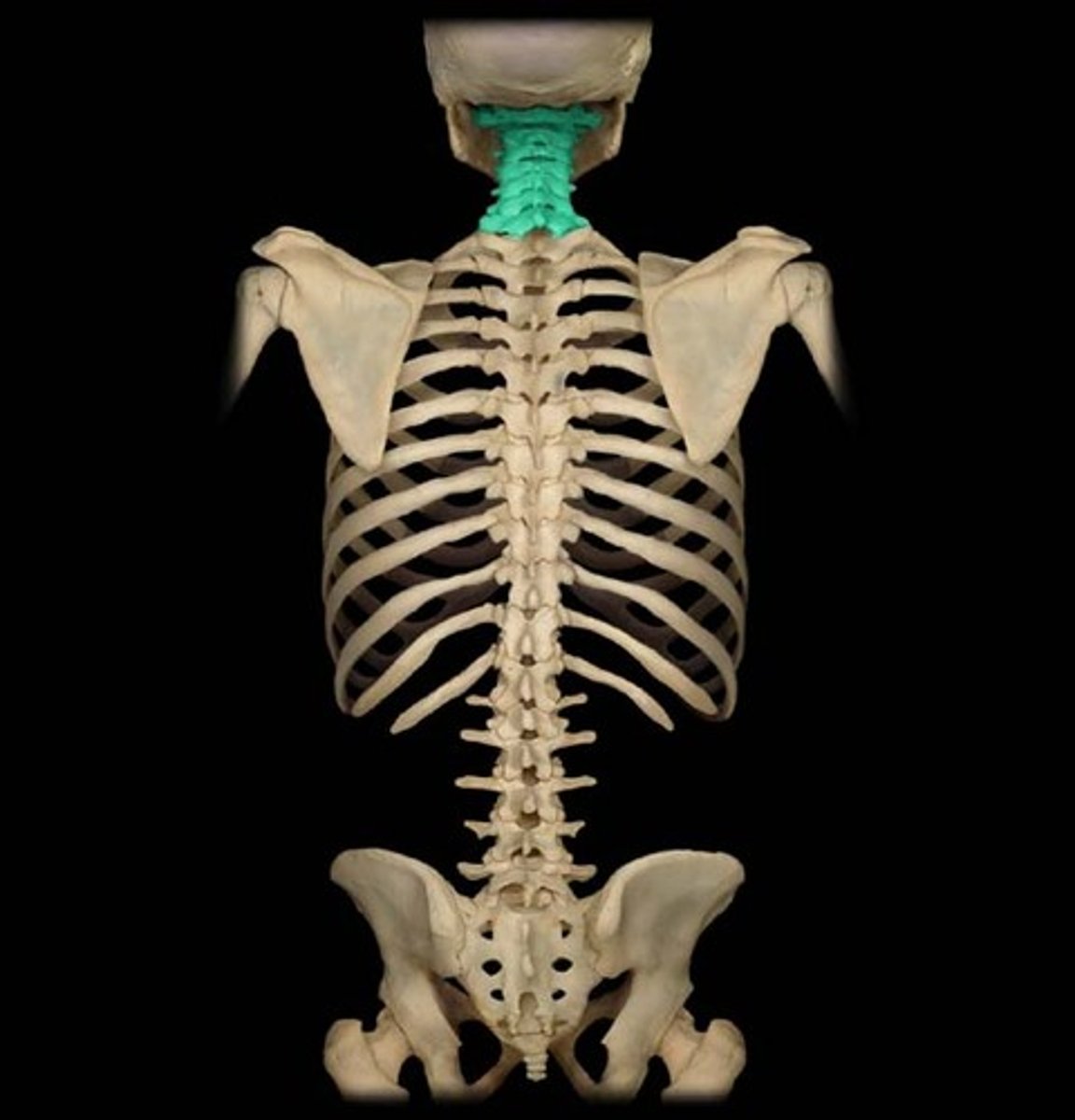
Atlas (C1)
holds up the head
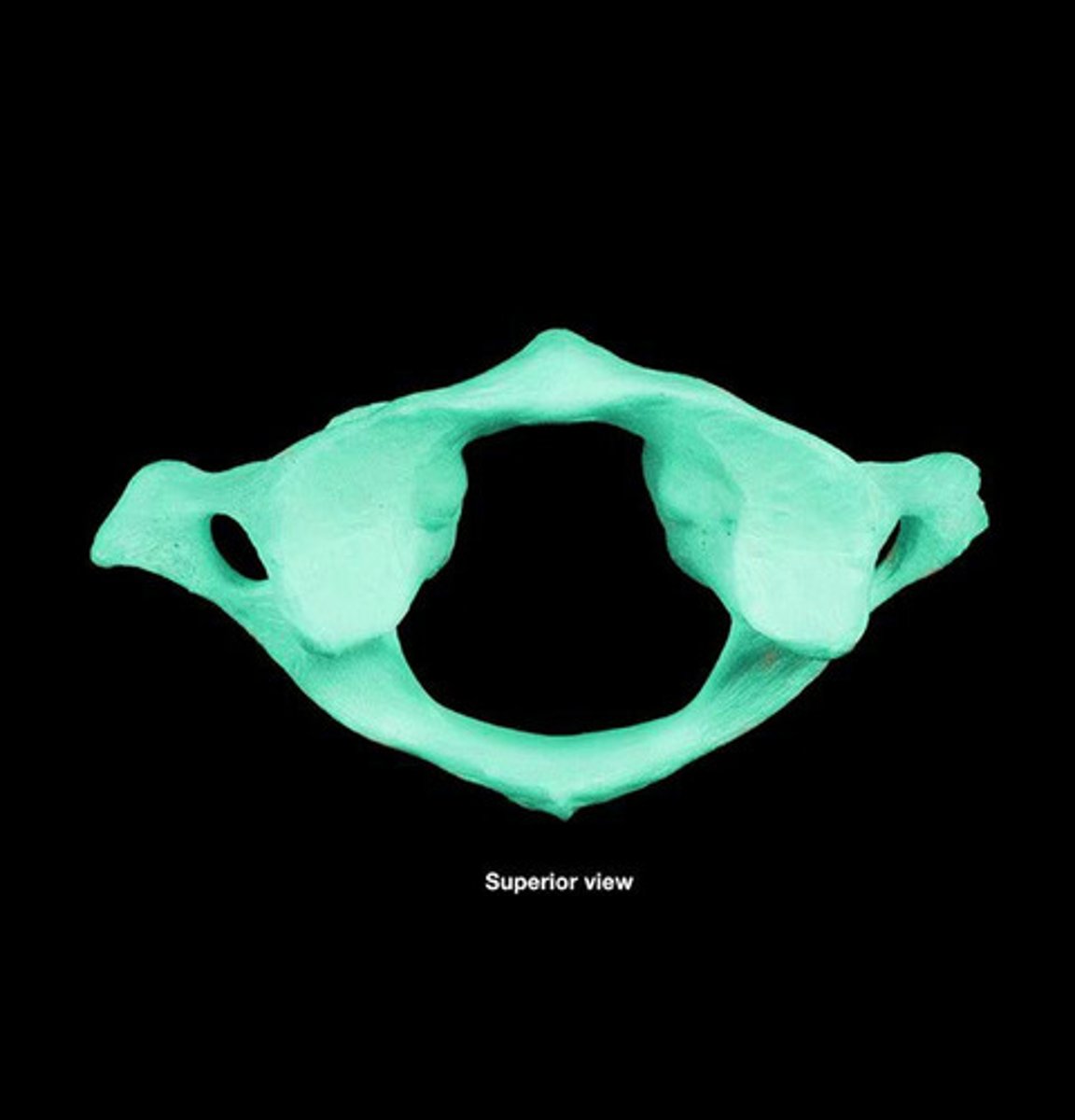
Axis (C2)
during development fuses with the atlas. This fusion creates dens. Forming a pivot for rotation of the atlas and the skull.
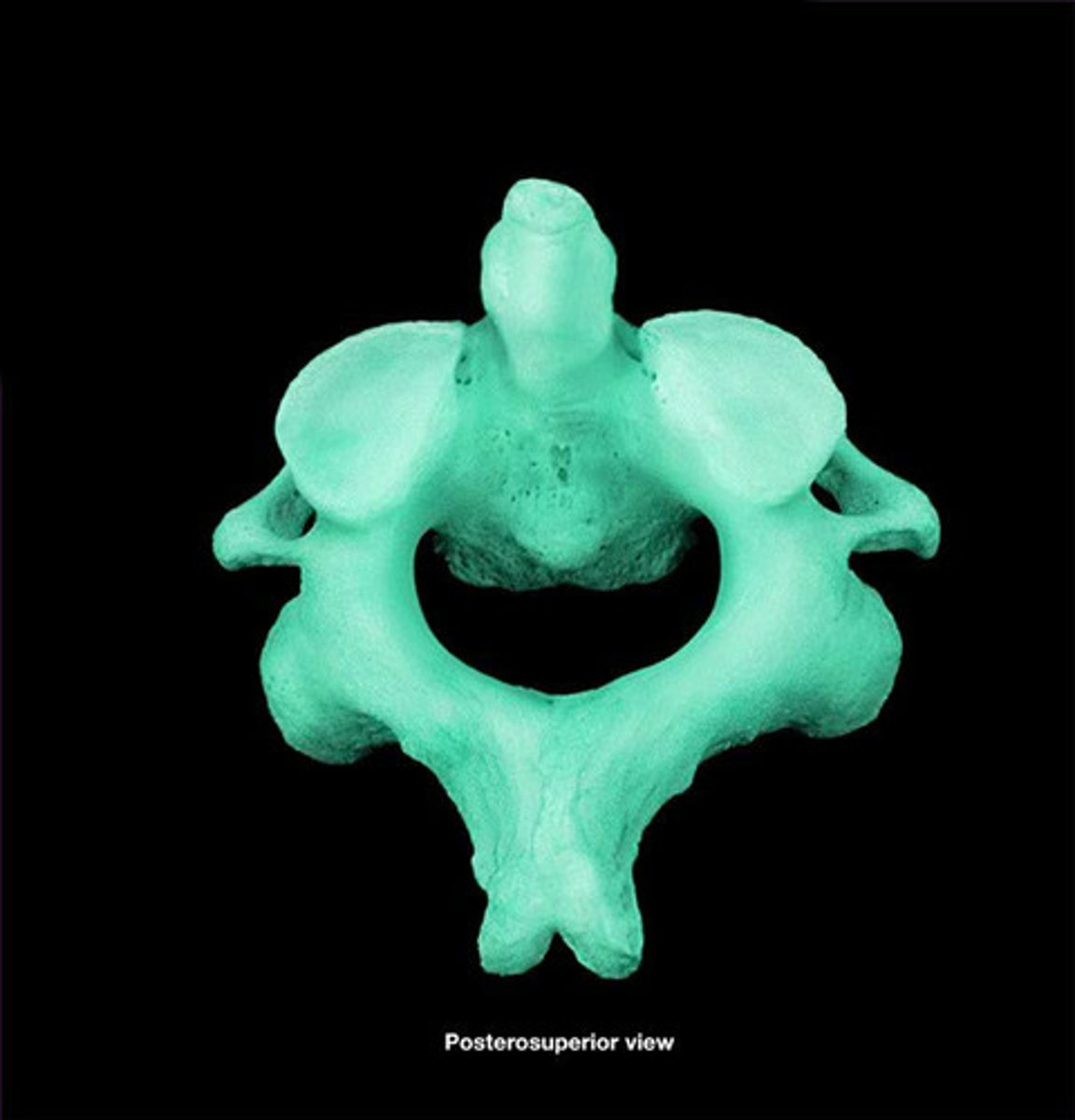
Thoracic curve
a primary curve, accommodates the thoracic organs. (12vertebrae)
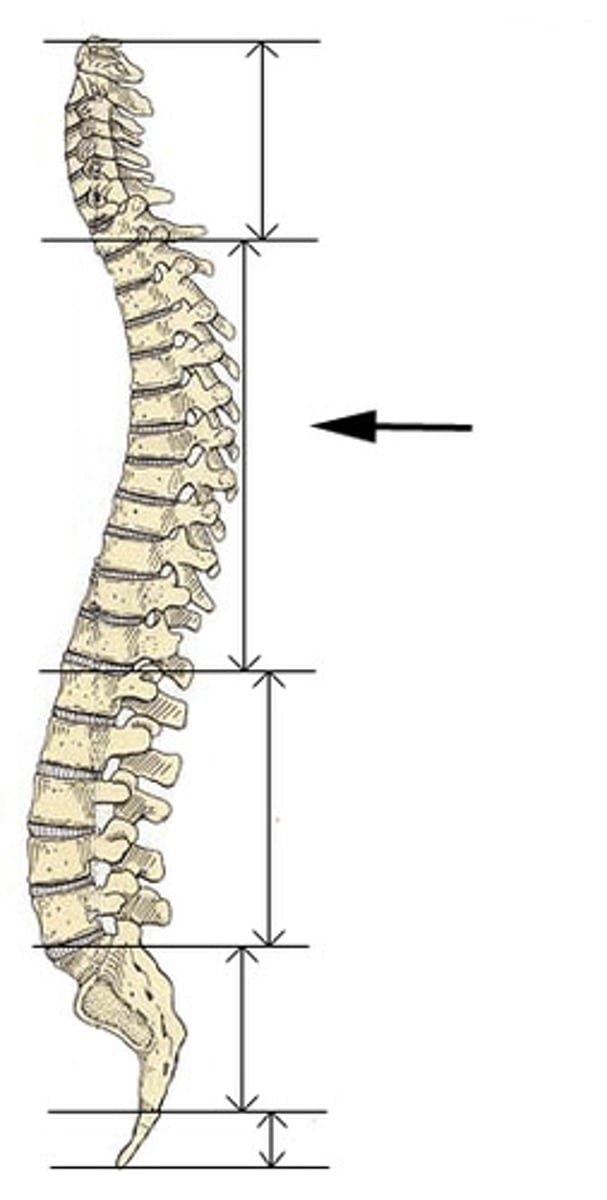
Lumbar Curve
a secondary curve, balances the weight of the trunk over the limbs; it develops with the ability to stand. (5verterbrae)
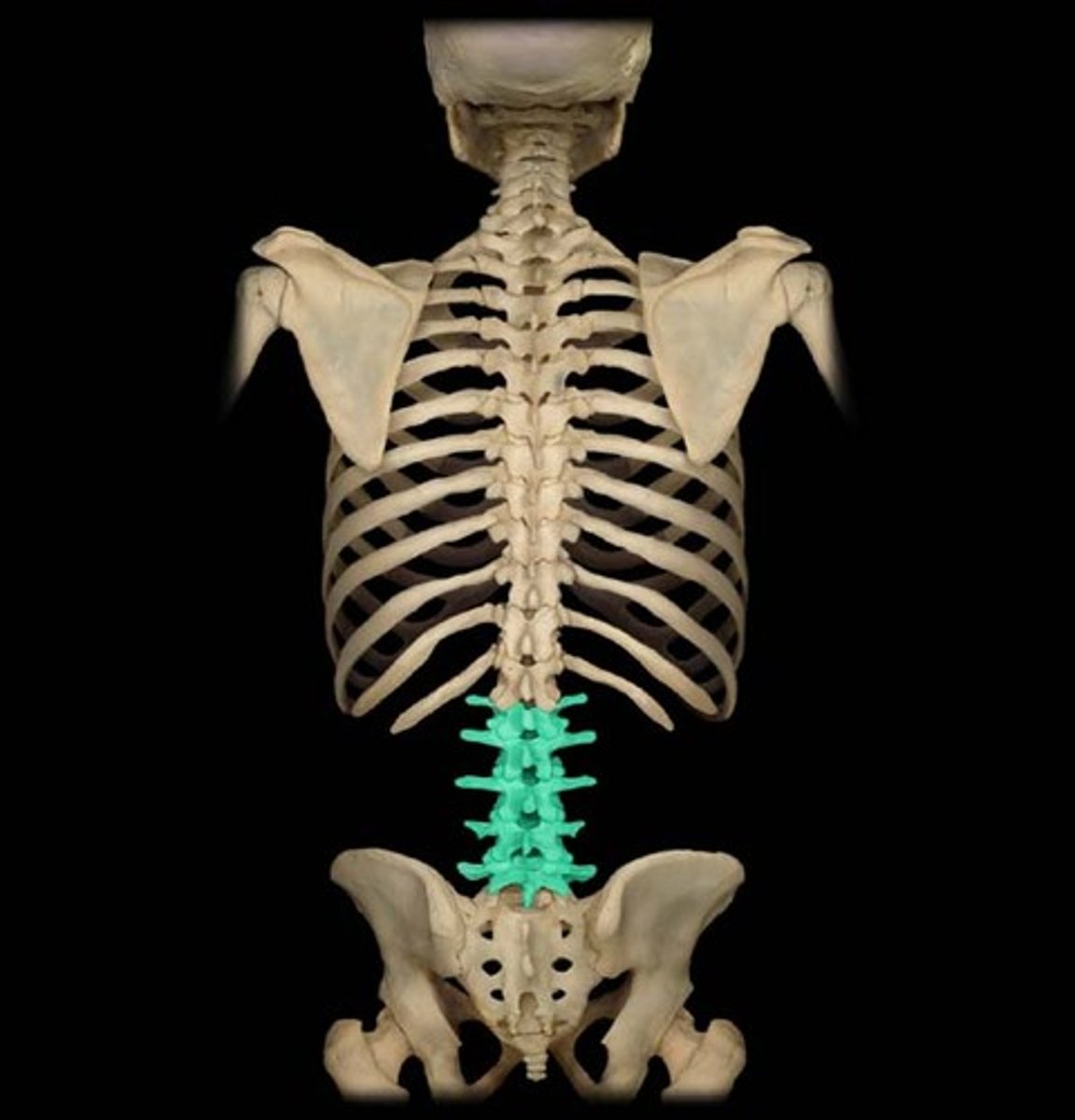
Sacrum
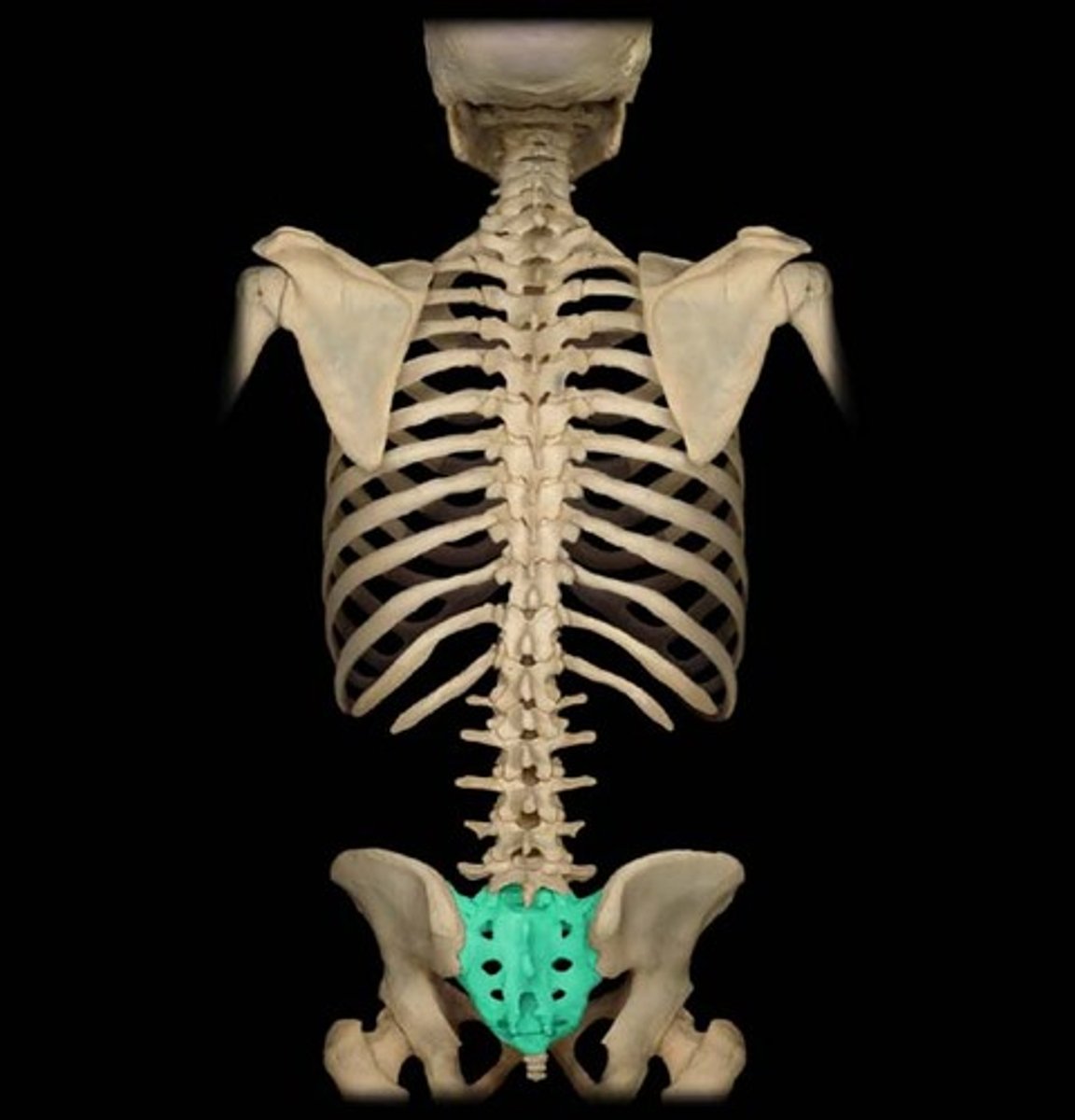
Coccyx
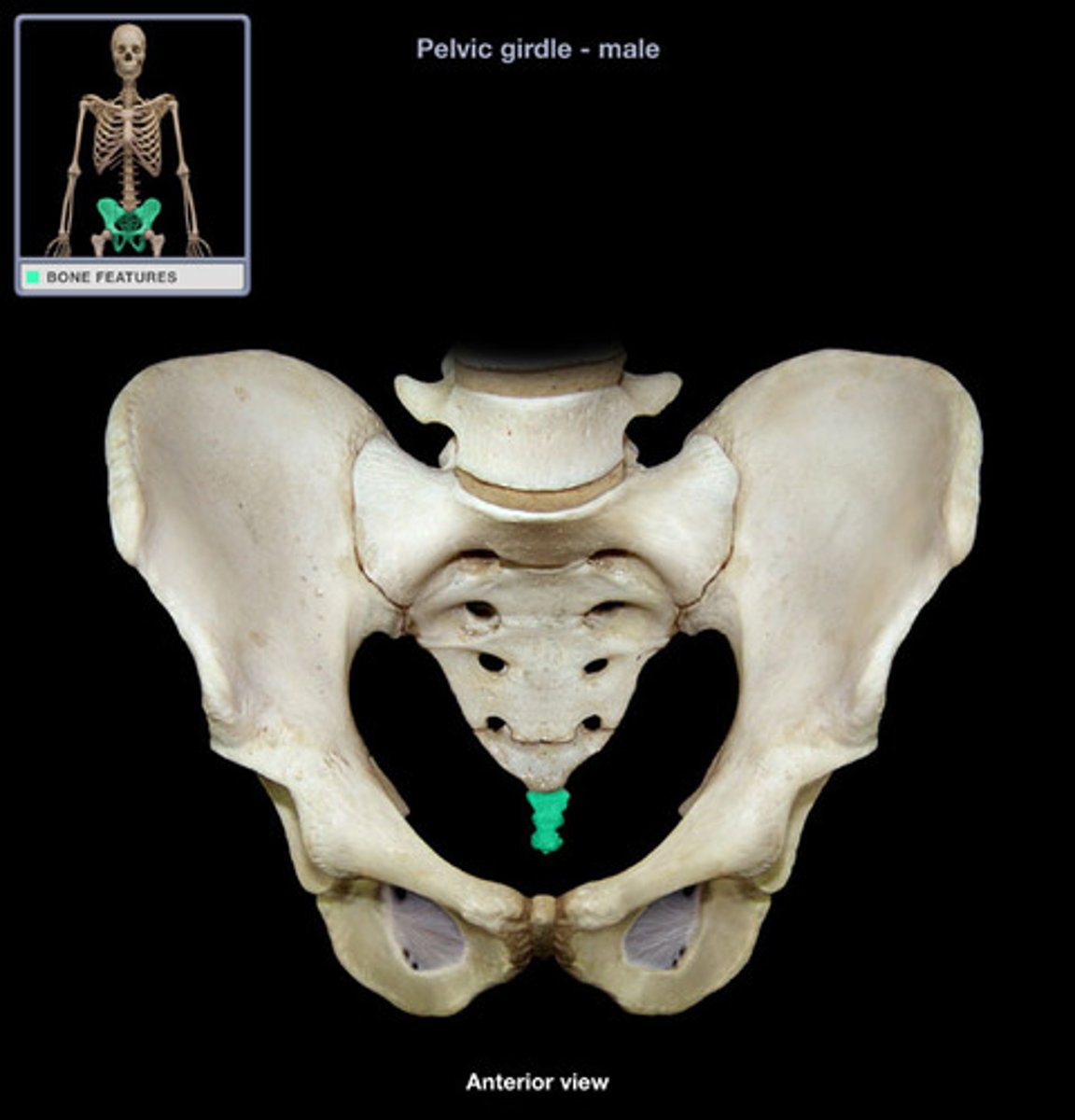
Hyoid bone
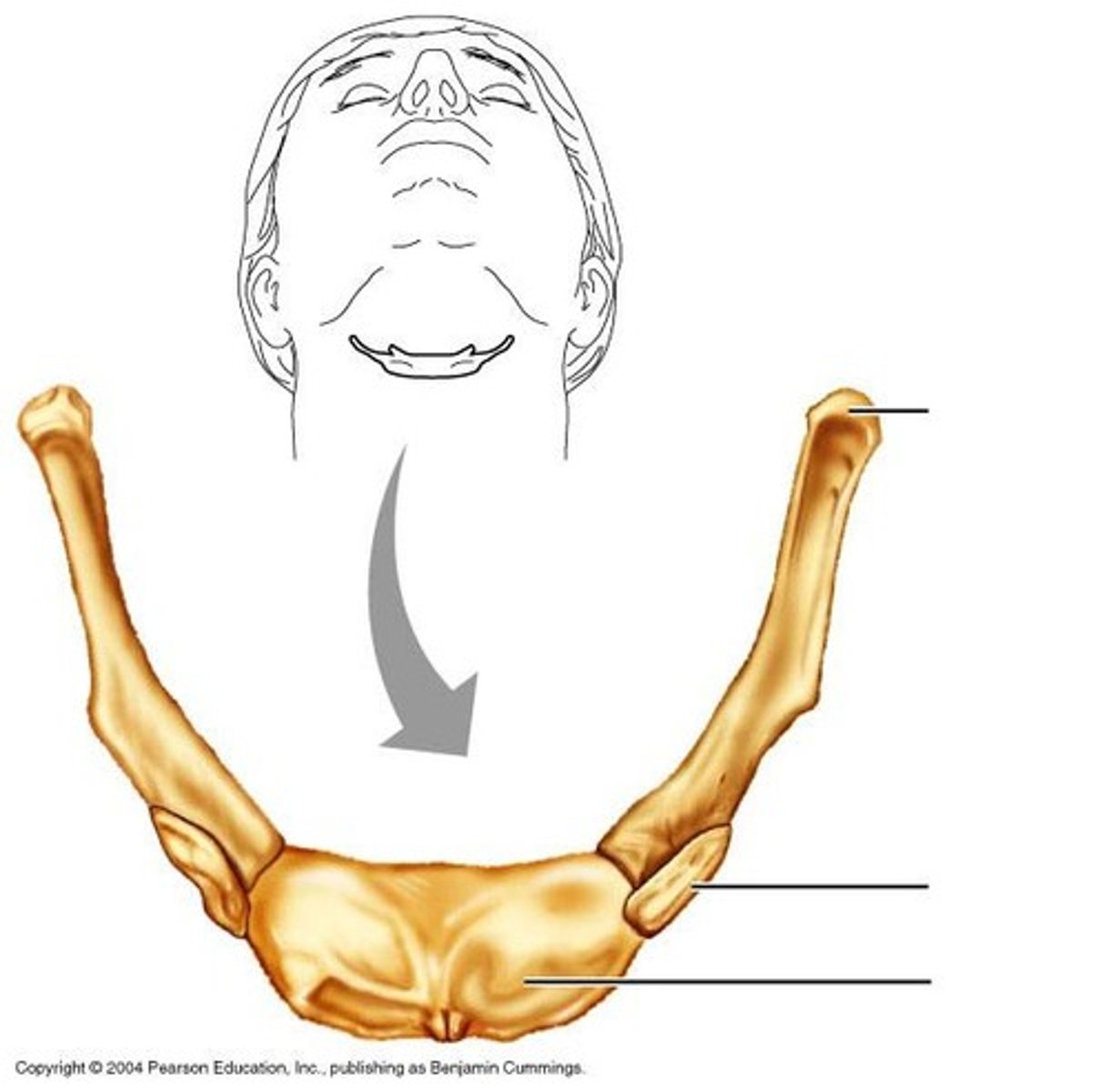
True Ribs
Ribs 1-7
The first 14 ribs.
Connected to the sternum.
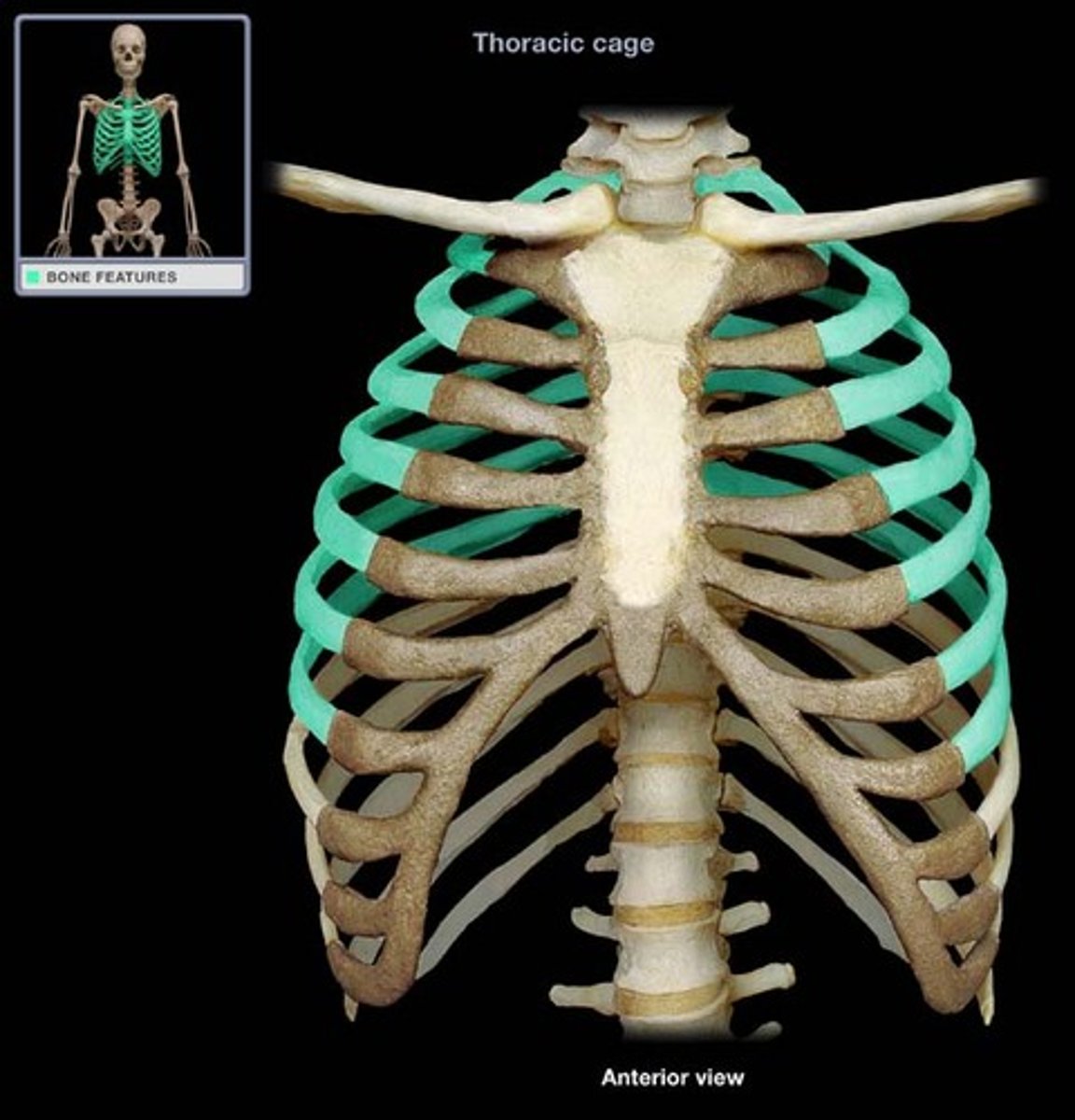
False Ribs
Ribs 8-12
They do not attach directly to the sternum
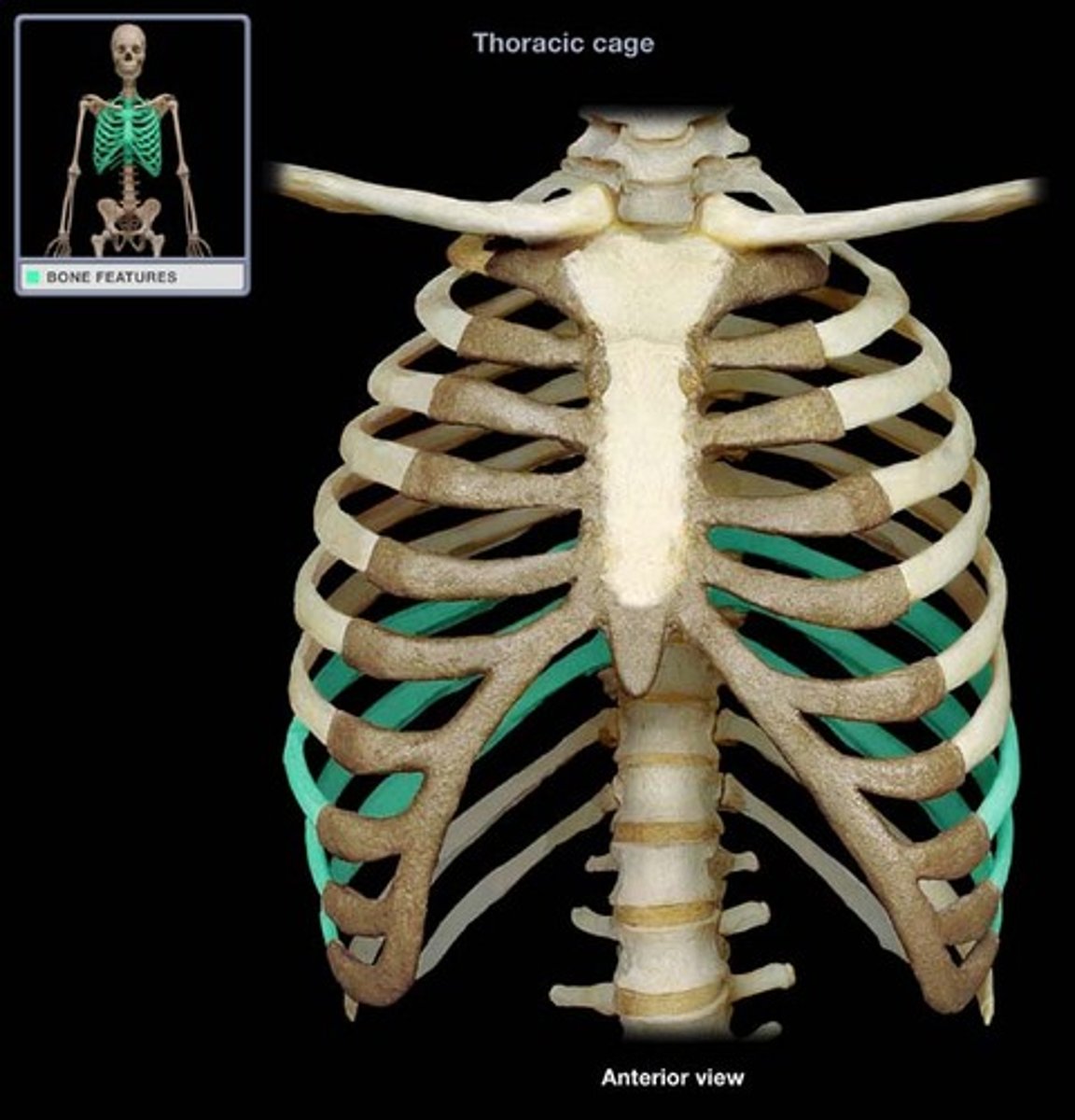
Floating Ribs
Ribs 11 & 12
Connect only to the vertebrae and back muscle have to connection with the sternum
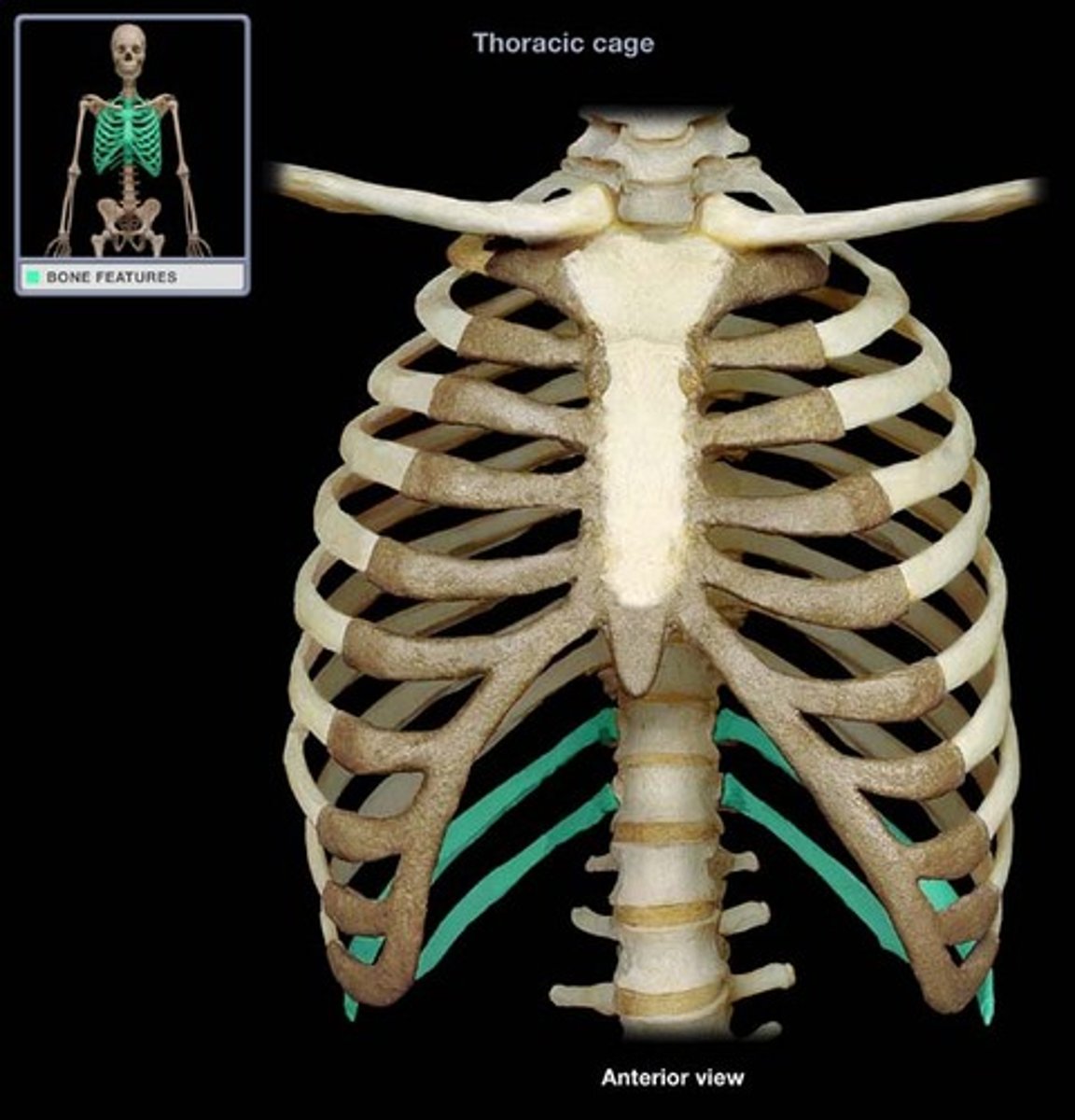
Vertebrochondral Ribs
Ribs 8-10
Fuse together
Merge with cartilage before reaching the sternum
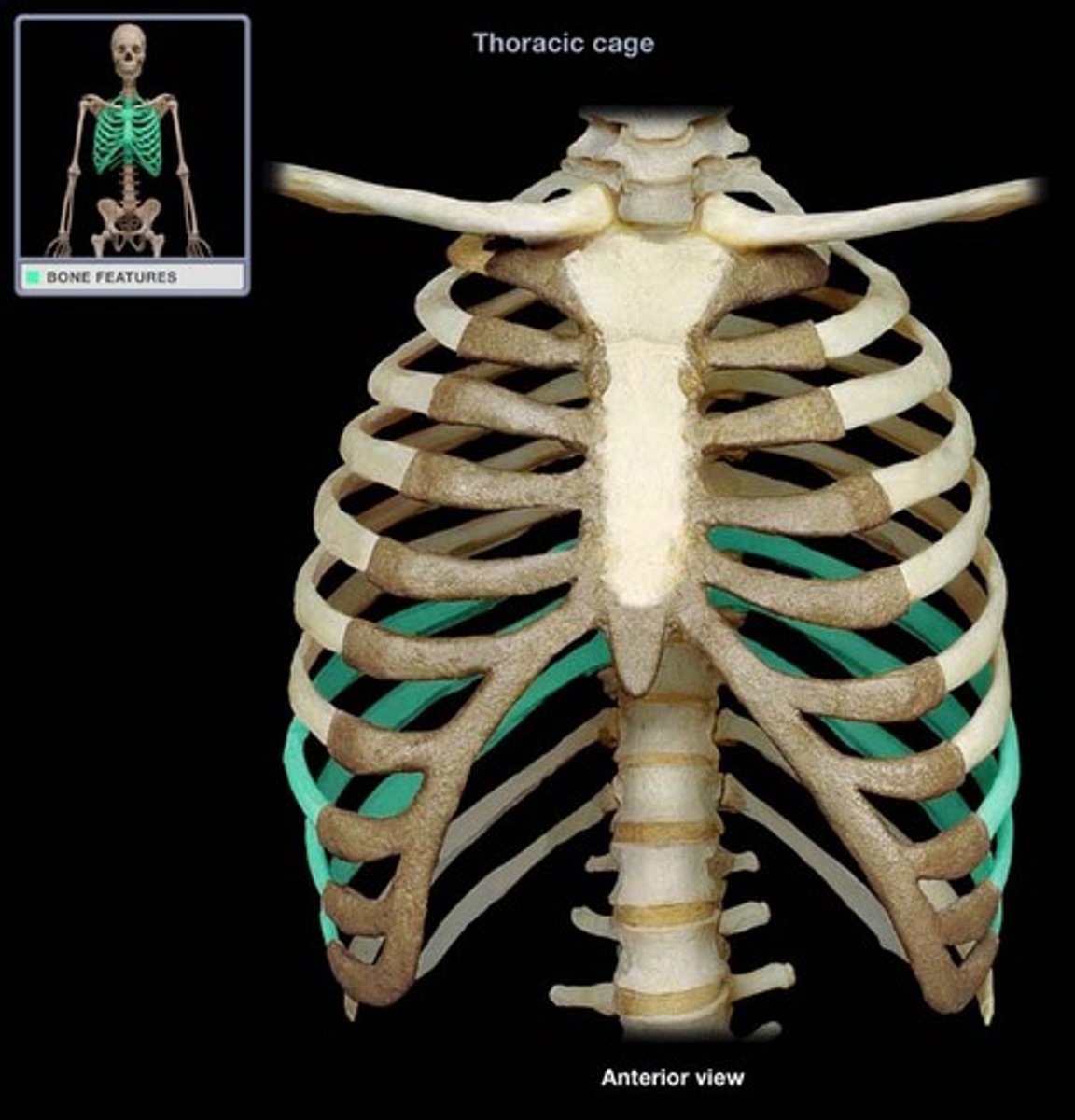
Fossa
A shallow, broad or elongated basin (Mandibular Fossa)
Depression
Sulcus
A groove for a tendon, nerve, or blood vessel (intertubercular sulcus of the humerus)
Depression
Canal
A tubular passage or tunnel in a bone (auditory canal of the skull)
Fissure
A slit through a bone (Orbital fissures behind the eye)
Foramen
A hole through a bone, usually round (Foramen magnum of the skull)
Sinus
An air-filled space in a bone (Frontal sinus of the forehead)